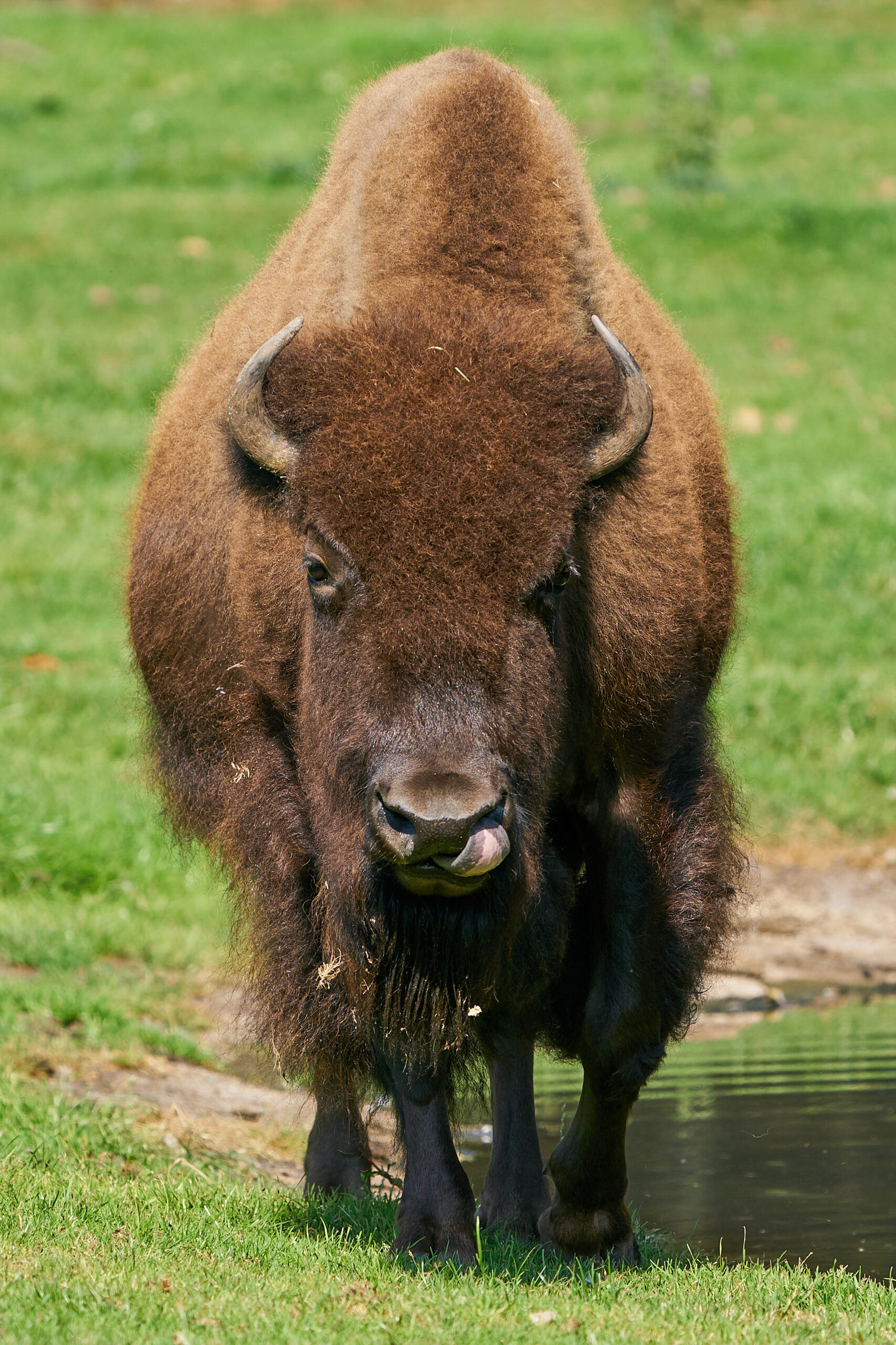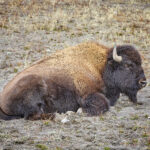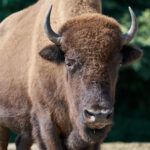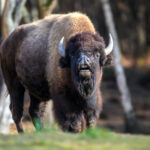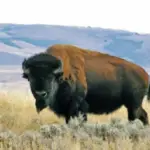Understanding Bison Behavior
Recognizing aggressive bison behavior
When encountering a bison, it is crucial to be able to recognize signs of aggression. Aggressive bison may display certain behaviors such as pawing the ground, shaking their heads, snorting, or raising their tail. These indications should alert you to the fact that the bison is feeling threatened and may potentially charge. It is important to remember that bison are wild animals and should be given the space and respect they deserve.
Interpreting bison signals
Bison communicate through different body language signals to convey their intentions. By understanding these signals, you can better assess the situation and act accordingly. For example, if a bison flicks its tail, it could indicate irritation or agitation. If a bison lowers its head, it may be preparing to charge. Being attentive and observant of these signals can help you gauge the bison’s state of mind and take appropriate precautions.
Understanding why a bison might charge
Bison usually charge when they feel threatened, especially if they perceive you as a potential predator. They are known to be protective of their young and their personal space. Additionally, bison may charge when they feel cornered or if they have had negative encounters with humans in the past. Understanding the reasons behind their charging behavior can help you anticipate and prevent potentially dangerous situations.
Avoiding Encounters with Bison
How to stay safe around bison
The best way to ensure your safety around bison is to maintain a safe distance. Keep in mind that bison are powerful and agile creatures, capable of quick movements. Experts recommend staying at least 25 yards away from them. By respecting their space, you are less likely to provoke aggressive behavior and increase the risk of an encounter turning dangerous.
The importance of keeping a safe distance
Maintaining a safe distance is essential for preventing bison charges. It is crucial to remember that bison are wild animals and not domesticated pets. Approaching them too closely or invading their personal space can cause them to feel threatened, triggering a charge instinct. Always give them ample space and observe them from a distance to minimize the risk of a dangerous encounter.
Protective measures against bison
While maintaining distance is the primary protective measure, there are additional precautions you can take to further ensure your safety. Avoid approaching lone bison or getting between a mother and her calf. Also, if you encounter a group of bison, maintain a wide berth around them rather than attempting to pass through their midst. These simple measures can significantly reduce the chances of an encounter escalating into a hazardous situation.
Immediate Actions If a Bison Charges
Keeping calm and composed
If you find yourself facing a charging bison, staying calm is of utmost importance. It can be an alarming situation, but panicking will only make matters worse. Remember that bison charges are often displays of dominance rather than an intent to harm. By remaining calm, you can maintain clarity of mind and make rational decisions to keep yourself safe.
Avoiding direct eye contact
When a bison charges, it is crucial to avoid making eye contact with them. Direct eye contact may be perceived as a threat or challenge by the animal, further escalating the situation. Instead, look away slightly and remain aware of the bison’s movements through your peripheral vision. This non-confrontational approach can help defuse the tension and potentially prevent a charge.
Backing away slowly, not running
If a bison charges, it is natural to feel the urge to run. However, running can trigger the bison’s predatory instincts and cause them to chase you. Resist the temptation to run and instead back away slowly while keeping your eyes on the bison. Create as much distance as possible between you and the animal, while avoiding any sudden movements that may provoke another charge.
Using Distractions to Deter a Charging Bison
Using noise as a deterrent
When faced with a charging bison, using noise as a distraction can be an effective strategy. Shouting loudly or using a whistle can startle the animal and potentially divert its attention away from you. Bisons rely heavily on their acute hearing, and a sudden loud noise may disrupt their charge and give you precious moments to safely retreat.
Throwing objects (not at the animal)
In some cases, throwing objects can also serve as a distraction to deter a charging bison. Tossing a small object, such as a water bottle or stick, away from you can grab the bison’s attention and redirect its focus. However, it is crucial to emphasize that you should never throw objects directly at the animal, as this may aggravate the situation. The objective is to create a diversion, not to harm or provoke the bison further.
Finding Shelter or Protection
Using a tree, rock, or car as protection
Having a physical barrier between you and the charging bison can provide a layer of protection. If available, seek shelter behind a tree, large rock, or even your vehicle. These objects can act as a barrier, potentially deterring or blocking the bison’s charge. However, it is important to note that bison are strong, and not all structures may be able to withstand their force. Additionally, always prioritize your personal safety and avoid taking unnecessary risks.
Knowing when and how to climb a tree
Climbing a tree should be considered as a last resort when facing a charging bison. While bison are not natural climbers, they are capable of tilting or dislodging smaller trees. If no other options are available and the tree seems sturdy enough, climb at least 10 feet off the ground to prevent the bison from reaching you. However, keep in mind that climbing a tree may not always be a viable solution and should be attempted only if absolutely necessary.
Avoiding Sudden Movements
Reacting slowly and predictably
During an encounter with a bison, it is crucial to move slowly and predictably. Sudden movements can startle the animal and escalate the situation. Make deliberate and measured motions, allowing the bison to understand that you do not pose a threat. By staying composed and avoiding sudden gestures, you increase the likelihood of diffusing the tension and preventing a charge.
Not agitating the bison further with quick movements
In the presence of a bison, it is vital not to provoke or agitate the animal further with quick movements. Rapid gestures or sudden actions can be misinterpreted as aggressive behavior and may trigger a charge. Keep your body language calm, avoid making abrupt gestures, and give the bison the opportunity to deescalate the situation by recognizing your non-threatening behavior.
Responding if Knocked Down
Protecting your head and vital organs
In the unfortunate event of being knocked down by a charging bison, protecting your head and vital organs becomes crucial. Try to curl into a fetal position, tuck your head down, and cover it with your arms. Shielding your head and vital organs can help reduce the risk of severe injuries. Stay as still as possible until the bison moves away or help arrives.
Playing dead until the bison moves away
If knocked down by a bison, playing dead can be an effective strategy to survive the encounter. Once in a fetal position, remain still and avoid any sudden movements. Playing dead may confuse the bison and cause it to lose interest, giving you a chance to escape once it moves away. Remember to stay vigilant and only resume your movements when you are certain the bison is no longer a threat.
Seeking Immediate Medical Attention
Assessing injuries
After a bison encounter, it is crucial to promptly assess any injuries you may have sustained. Even if the injuries appear minor, it is important to have a medical professional evaluate you for any potential internal injuries or infections. Bison are powerful animals, and their strikes can cause significant damage. Don’t delay seeking medical attention, as early intervention can prevent complications and ensure a quick recovery.
Reaching for help and reporting the attack
If you have been charged or injured by a bison, it is essential to reach out for help as soon as possible. Inform someone nearby about the situation and ask for assistance in getting to a safe location. Once safe, report the attack to the appropriate authorities, such as park rangers or wildlife officials. Reporting the incident helps with documentation, ensuring that necessary actions are taken to prevent further danger to both humans and bison.
Precautions for Hikers and Campers
Planning safe routes
When planning hiking or camping trips in areas inhabited by bison, it is essential to choose safe routes. Research and familiarize yourself with the area’s wildlife and bison population. Know their habits, common areas, and anticipated behavior. By having a well-informed plan, you can avoid potentially hazardous encounters and make the most of your outdoor experience.
Discussing bison safety while preparing for hiking or camping
Before embarking on a hiking or camping trip, discuss bison safety with your group or companions. Ensure everyone understands the importance of respecting wildlife and maintaining a safe distance from bison. It is crucial to reiterate the signs of aggressive behavior and the appropriate actions to take if a bison charges. By having these discussions and being prepared, you can significantly reduce the risk of a dangerous encounter.
Do Lions Also tend to Charge at Humans?
Do Lions Also tend to Charge at Humans? It is a common misconception that lions are lazy, but it’s essential to understand their behavior. Lions generally avoid humans and prefer hunting wild prey. However, certain factors like predation conflicts, territorial disputes, or feeling threatened can provoke lions to charge at humans. Understanding why are lions lazy can help bridge the gap between their natural instincts and human safety.
Promoting Bison Conservation and Respect
Understanding the significance of bison in the ecosystem
Bison play a vital role in shaping and maintaining ecosystems. They are considered a keystone species, meaning they have a disproportionate impact on their environment compared to their population size. By grazing on grasses and creating open habitats, bison contribute to biodiversity and support the overall health of ecosystems. Understanding their ecological significance fosters a greater appreciation for their conservation and respect.
Teaching others about the importance of respecting wildlife
Education is key to promoting a culture of wildlife conservation and respect. By sharing your knowledge about bison behavior and safety guidelines, you can help others understand the importance of respecting wildlife and their habitats. Encourage responsible behavior around bison and emphasize the significance of coexisting harmoniously with these magnificent creatures.
Supporting bison conservation initiatives
There are numerous organizations and initiatives dedicated to the conservation of bison and their habitats. Supporting these initiatives through volunteering, donations, or raising awareness can make a real difference in ensuring the survival of this iconic species. By actively engaging in bison conservation efforts, you contribute to preserving their natural environments and promoting their overall well-being.
In summary, encountering a bison can be an awe-inspiring experience, but it is crucial to approach these magnificent animals with caution and respect. By understanding bison behavior, recognizing signs of aggression, and taking appropriate precautions, you can minimize the risk of dangerous encounters. Remember to stay calm, make slow and deliberate movements, and always prioritize your safety. Through promoting bison conservation and teaching others about their ecological significance, we can help create a world where humans and bison can coexist in harmony.

